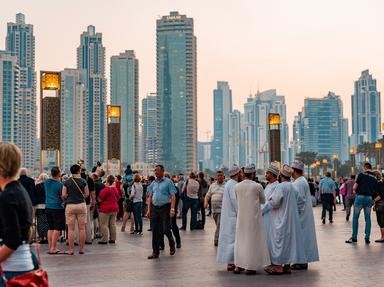Quiz Answer Key and Fun Facts
1. Largest emirate in area
2. Smallest emirate in area
3. Only emirate with no Persian Gulf coastline
4. Home to the Burj Khalifa
5. Last emirate to join the union
6. Has the agricultural exclave Manama
7. Location of the Al Hefaiyah Conservation Centre
8. Only emirate with no significant oil reserves
9. Contains the highest point of the UAE, Jabal Jais
10. Home to the oldest active mosque in the UAE
Source: Author
looney_tunes
This quiz was reviewed by FunTrivia editor
agony before going online.
Any errors found in FunTrivia content are routinely corrected through our feedback system.

